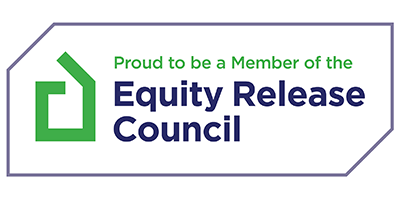First Time Buyer Mortgage Advice in London
If you are looking to figure out roughly how much you are able to borrow for a mortgage based on your household income, it may be worth your time taking a look at our free mortgage calculator.
If you would prefer to have a more accurately estimated mortgage affordability figure, please get in touch and we’ll book you in for a free mortgage consultation to speak with one of our mortgage advisors in London.
As an experienced mortgage broker in London, the two most common questions we find that first time buyers in London and home movers in London ask us are, “can I get a mortgage in my situation?” and “how much can I borrow?” In this mortgage guide, we will be taking a closer look at the latter of the two, in which we will take a look at how things were historically, followed by what happens now.
To skip past the historic rules and just see where we are today, please click here.
Historic Rules
Taking a look back to the 80s and 90s, pretty much all mortgage applications were manually underwritten. What this means is that the process of approving mortgages was very much left to real people and not just machines. You would call up your local building society, book in for an appointment with your building society manager, and they would interview you to discuss the case you have presented them with.
From there you could probably guarantee that this would inevitably turn into a sales pitch, where they would encourage you to start saving with them for a while until you can prove to them that you are creditworthy. The manager would then grant you what was a past equivalent of today’s Agreement in Principle. Following this, the customer would then be given some advice on the amount that they may be able to borrow.
Whilst from the outside looking in this sounds very much like a highly personalised process with a simple and common-sense approach, it had a habit of leading to rather inconsistent decision-making. The manager had the discretion to interpret the lending manual in the way that they wanted to. In other words, it was realistic for you to approach the same building society in a different location altogether and leave, having obtained an entirely different outcome than the more local branch you had gotten in touch with.
To make sure this was prevented and more importantly, to cut any costs that weren’t necessary, lenders moved to automated affordability calculations. We saw caps introduced, which were applied as a means of allowing to lend customers sometimes 3 or even 4 times their annual income.
As we headed towards the 2000s, lenders relaxed themselves even more, becoming arguably even too generous in how much they would be willing to lend their customers. Some lenders would offer out self-certified mortgages, a process that meant no background checks would take place and the customer could self-certify their own income, even if the amount they were declaring was falsely inflated.
The market fell apart and these kinds of practices brought about the infamous Credit Crunch of 2008. The years that followed, between then and 2010, were incredibly challenging times. This was especially the case if you were trying to get onto the property ladder for the first time. It was at this point lenders had to change and much stricter lending criteria had to be put in place.
Nowadays Approach
Through lots of dedication and perseverance, the market recovered. In 2014 the regulator launched the Mortgage Market Review (MMR), a brand new and completely revised set of guidelines for lenders to follow in order to prevent the Credit Crunch from happening again. No longer were the old-style income multipliers available, which took little account of household spending habits.
It may come as quite the surprise, but prior to 2014, whether their credit histories were good or bad, two applicants that were earning the same income could more or less be able to borrow the same as each other. This was also not factoring in how much they were regularly spending. From that point came all-new affordability models, taking a much more forensic view of how exactly those who are applying for a mortgage handle their finances.
As well as this new cap, typically the majority of mortgage lenders will no longer go past 4.75 times your annual income, and they prefer to have an in-depth analysis of your spending habits. Your habits may entirely depend on your individual situation, such as having high childcare costs, a potentially large amount of credit commitments, and in some cases, any student loans to pay off. In cases like these, a mortgage lender will most probably offer you less than say your work-colleague who has far less outgoings.
We are always surprised by the large differences between lenders in how much, or little they will lend to some customers. From time to time, some lenders have been known to penalise low-earners. It could just be that they are not looking for that type of applicant. Some take pension contributions as a fixed outgoing so may lend, for example, a public sector worker with a significant pension deduction, less than a private sector worker.
Each of these different lenders have their own unique lending criteria, and each customer has their own situation unique to them. If you need to maximise your borrowing capacity to have a chance at buying your dream home, then you’ll definitely benefit from the expert advice of a dedicated and experienced mortgage broker in London. Our team will be able to search the market on your behalf, to try and match a you to various lenders criteria.
If you find yourself wanting to know exactly how much you should borrow for a mortgage and are ready to go, please do get in touch and speak to one of our mortgage advisors in London today. We’ll sit and work out your finances with you, to ensure you are comfortable with the amount you’ll be paying back each month.
Fast & Friendly Mortgage Broker in London
Date Last Edited: January 20, 2023















